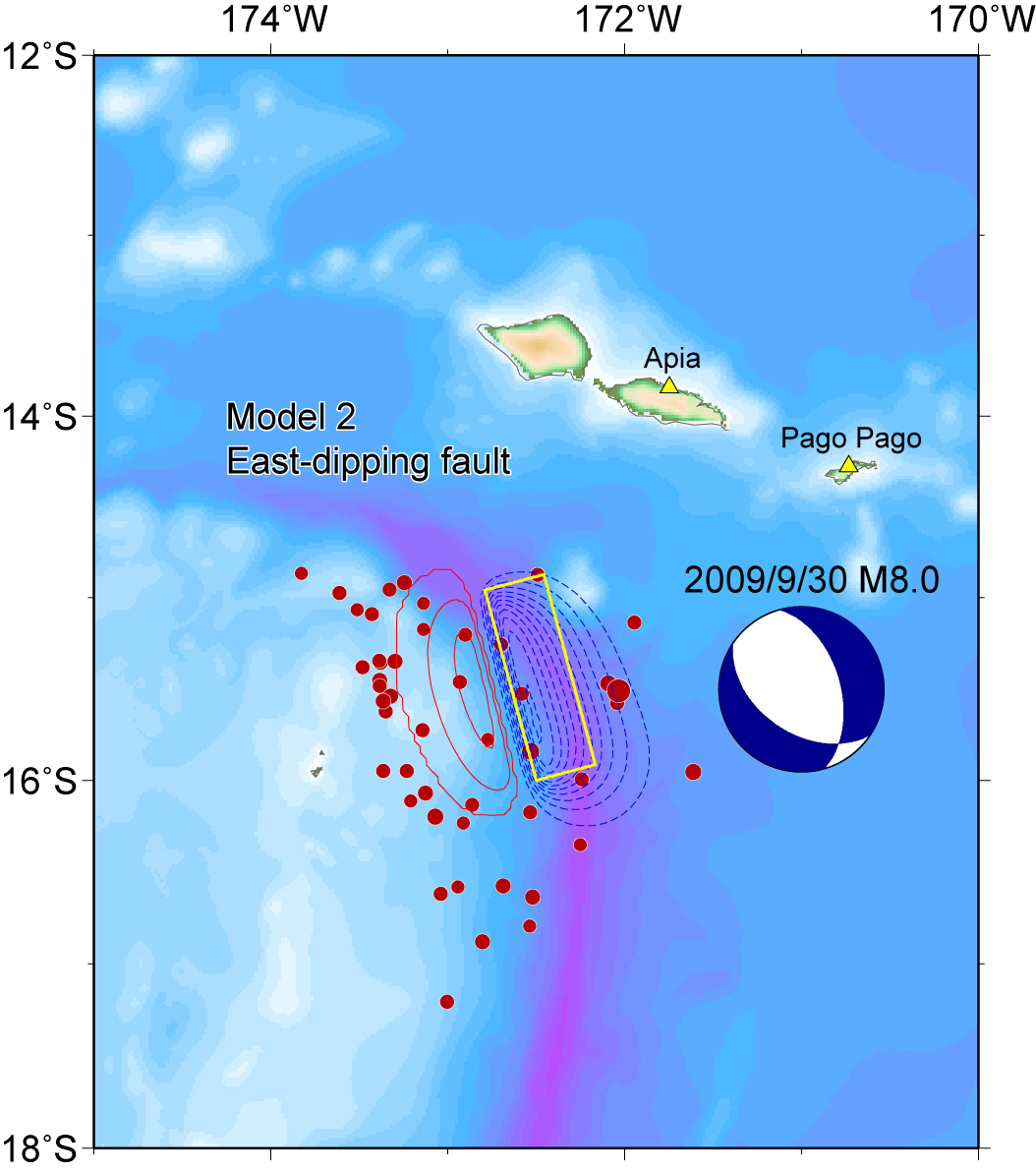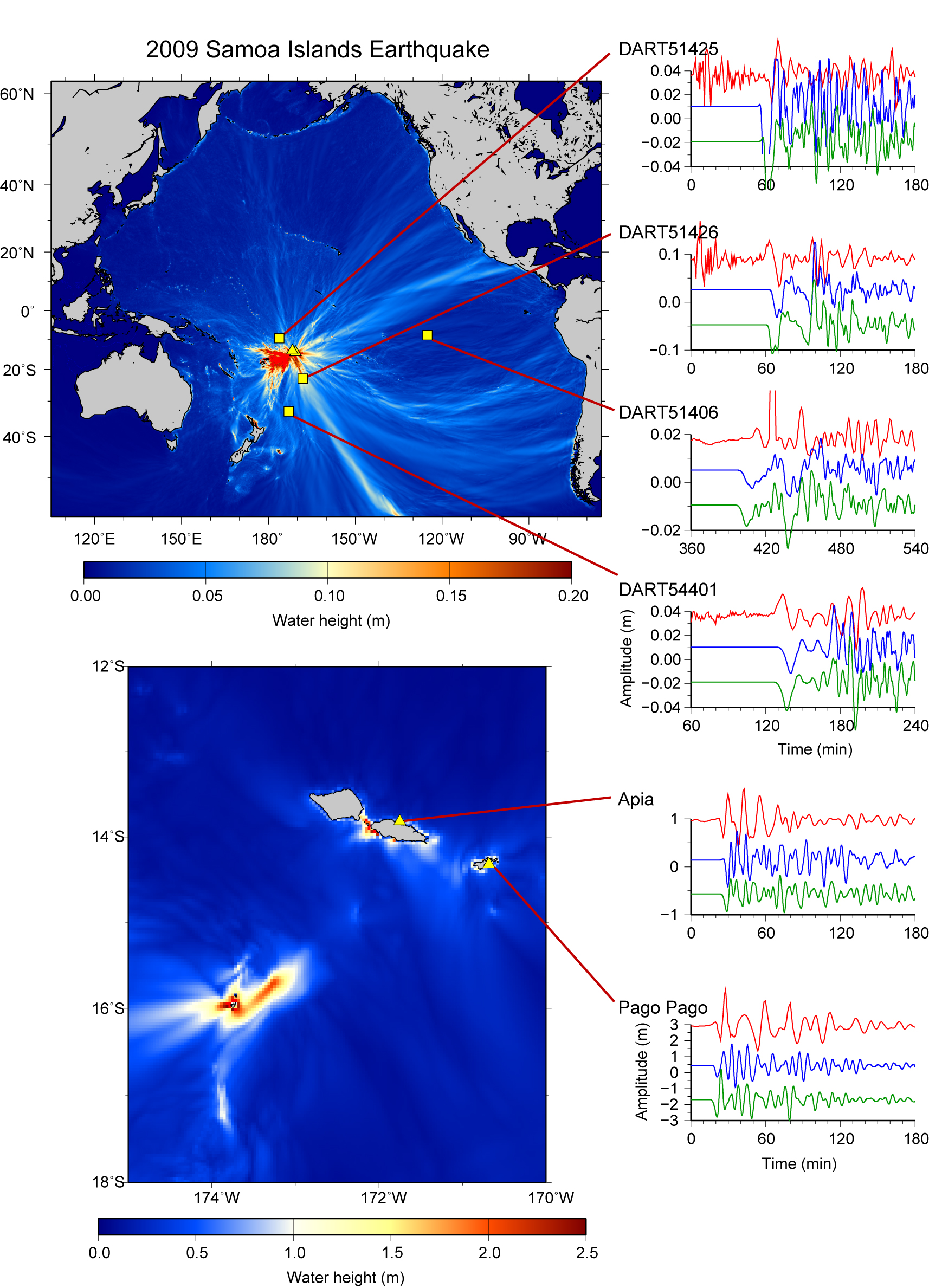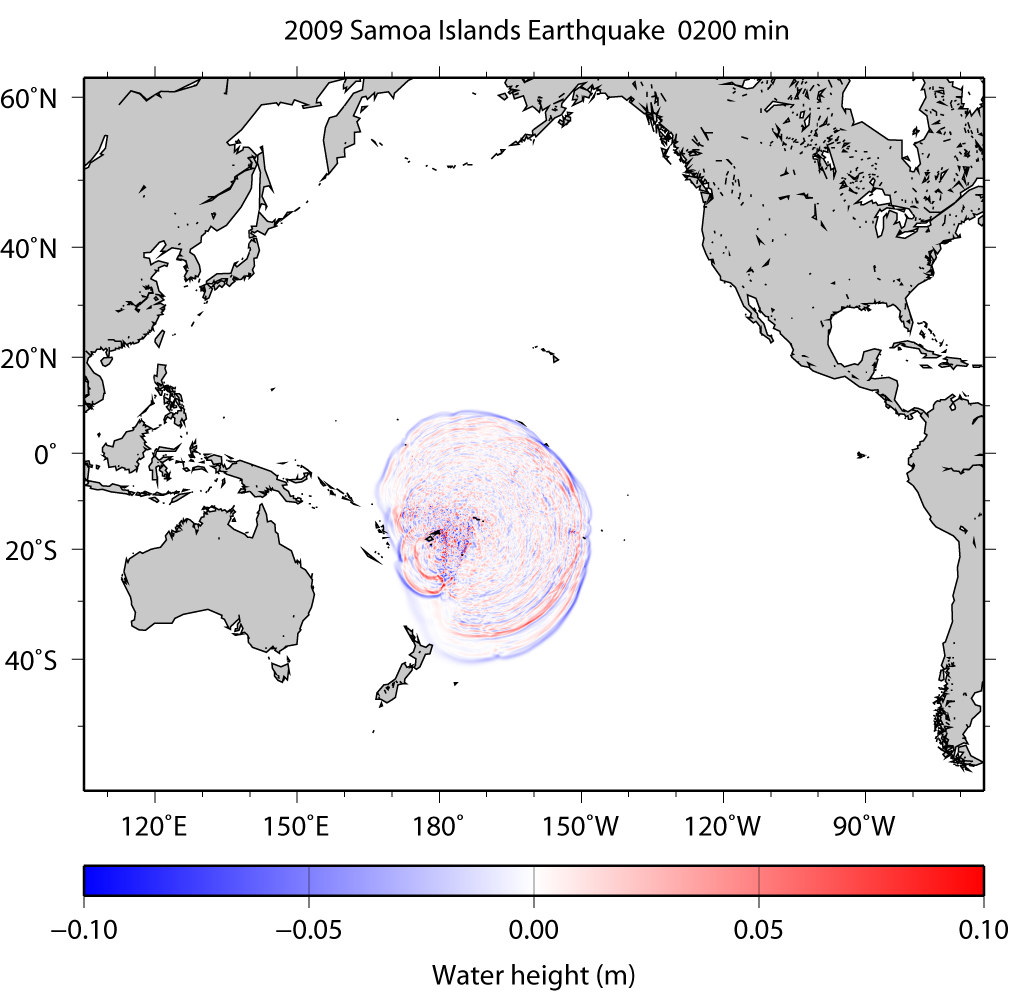| Samoa Islands Tsunami on Sep. 29, 2009 |
We have simulated the tsunami generated from the the Samoa earthquake (15.509°S, 172.034°W, Mw = 8.0 at 17:48:10 UTC according to USGS) on September 29, 2009. The assumed tsunami source is located within the aftershock area during one day after the mainshock (Fig. 1). The fault length and width are 120 km × 60 km. The focal mechanisms are strike:345º, dip:52º, slip:-61º for Model 1 and strike:124º, dip:46º, slip:-120º for Model 2, respectively, from the USGS's CMT solution. The top depths of the fault are 10 km for both models. The average slip on the fault is 5 m. As the initial condition for tsunami, static deformation of the seafloor is calculated for a rectangular fault model [Okada, 1985] using the source models. The used bathymetry data is 2 arc-minute grid data resampled from GEBCO 1 arc-minute grid data. To calculate tsunami propagation, the linear shallow-water, or long-wave, equations were numerically solved by using a finite-difference method [Satake, 1995]. The maximum heights of simulated tsunami indicate that the tsunami energy is concentrating to directions perpendicular to the strike of fault (Fig. 2). We have downloaded the DART and tide gauges data from NOAA's web sites and compared the simulated tsunami waveforms and the observed ones (Fig. 2). We can see the tsunami propagation in the Pacific Ocean (Fig. 3).


Fig.1 Tsunami Source Models
The red contours indicate uplift with the contour interval of 0.1 m, while the blue contours indicate subsidence with the contour interval of 0.2 m.

Fig.2 Maximum Height of Computed Tsunami with Model 1
Solid lines in red indicates the observed tsunami waveforms. Solid lines in blue and green indicate the synthtic ones in Models 1 and 2, respectively.

Fig.3 Tsunami Propagation (Click to start animation)
The red color means that the water surface is higher than normal sea level, while the blue means lower.
| by Yushiro Fujii (IISEE, BRI) and Kenji Satake (ERI, Univ. of Tokyo) |
|
|
| References |
|
Okada, Y. (1985), Surface Deformation Due to Shear and Tensile Faults in a Half-Space, Bull. Seismol. Soc. Am., 75, 1135-1154. Satake, K. (1995), Linear and Nonlinear Computations of the 1992 Nicaragua Earthquake Tsunami, Pure and Appl. Geophys., 144, 455-470. |
Last Updated on 2009/10/5